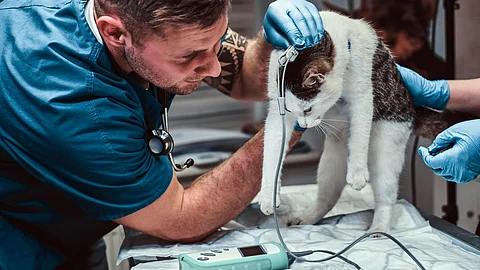Recovery and Prevention Techniques
After treatment, the focus must shift to recovery. Here are several strategies to support your pet's healing process:
Gradual Return to Activity
Let your pet play again slowly. Start with short times and watch closely. Don't rush the process.
Monitoring
Watch how your pet moves after healing. Check for limping or signs of pain. Stop the activity if they seem hurt.
Proper Warm-Up/Cool-Down
Before playing, help your pet warm up. After, let them slow down and rest. This can stop new injuries.
Regular Veterinary Check-Ups
Take your pet to the vet often. This helps catch problems early. It keeps your pet safe and healthy.
Ensuring Healthy Play for Animals
Understanding sports-related injuries in animals and how to treat them can significantly improve their quality of life. By recognizing the signs of injury and promptly seeking treatment, you can set your furry friend on a path to a full recovery.
Regular monitoring, proper precautions, and an informed approach to pet activities will not only keep your animal companion safe but also enrich your shared experiences.
For more related topics, visit our blog!


